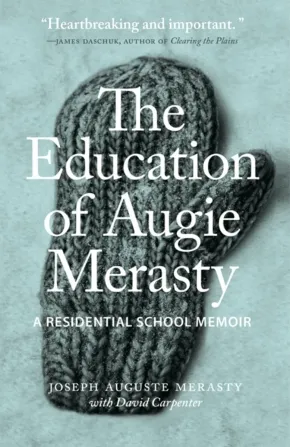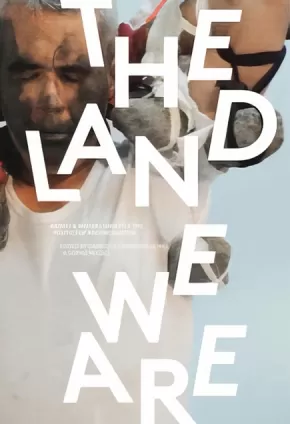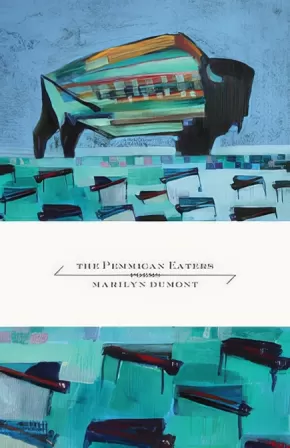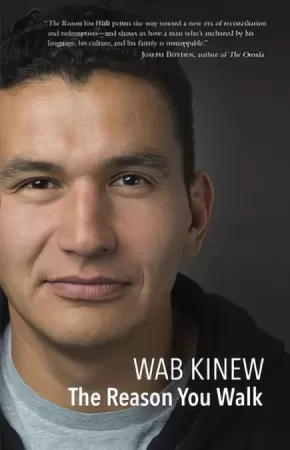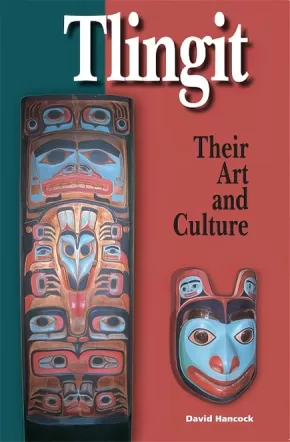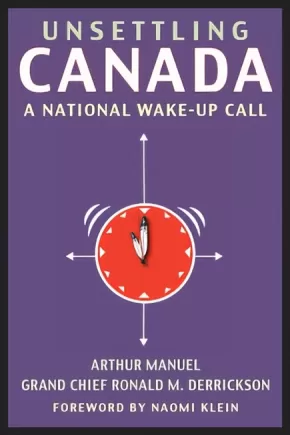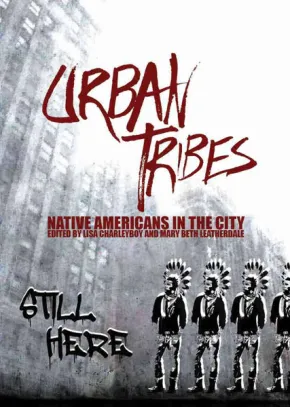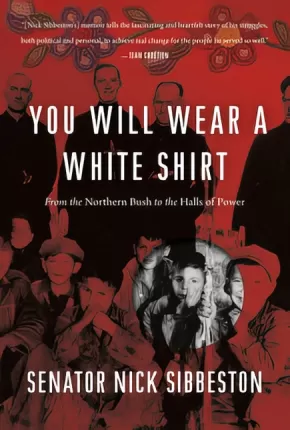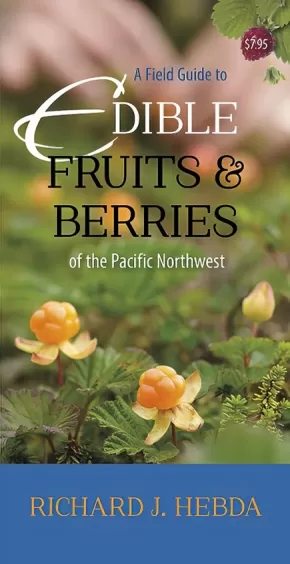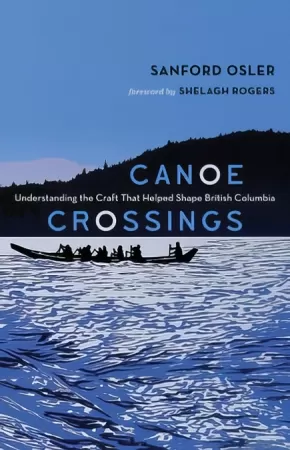
Non-Fiction
541
-
555
of
748 Results;
Sort By
Go To
of 50
The Education of Augie Merasty: A Residential School Memoir (HC) (9 in Stock)
$21.95
Format:
Hardcover
Text Content Territories:
Indigenous Canadian; First Nations; Cree (Nehiyawak);
ISBN / Barcode: 9780889773684
Synopsis:
Synopsis:
The Education of Augie Merasty offers a courageous and intimate chronicle of life in a residential school.
Now a retired fisherman and trapper, Joseph A. (Augie) Merasty was one of an estimated 150,000 First Nations, Inuit, and Metis children who were taken from their families and sent to government-funded, church-run schools, where they were subjected to a policy of "aggressive assimiliation."As Merasty recounts, these schools did more than attempt to mold children in the ways of white society. They were taught to be ashamed of their native heritage and, as he experienced, often suffered physical and sexual abuse.Even as he looks back on this painful part of his childhood, Merasty’s generous and authentic voice shines through.
Awards
- 2016 Burt Award Second Place Winner
Reviews
"At 86, Augie Merasty has been a lot of things: Father. Son. Outdoorsman. Homeless. But now he is a first-time author, and the voice of a generation of residential-school survivors.... The Education of Augie Merasty is the tale of a man not only haunted by his past, but haunted by the fundamental need to tell his own story... one of the most important titles to be published this spring." —Globe and Mail
"[Augie] wrote his memoir to show people the unbelievable atrocities suffered by so many Indigenous people and in the hope that others would come forward to tell their stories of what happened in the residential schools." —Eagle Feather News
"This book is so much bigger than its small size. It is a path to healing. We cannot change history, but we can acknowledge it, learn about it, and remember it." —Prairies North
"The Education of Augie Merasty might be a small book, but it carries a punch to it that all Canadian need to read and understand." —Rabble
"A truly extraordinary memoir by a truly extraordinary man." —Midwest Book Review
"Carpenter's introduction and afterword... allow us to come to better understand Augie's 'sometimes chaotic, sometimes heroic aftermath of his life,' as Carpenter describes his last decade. Where Augie focuses on physical scars, Carpenter's experiences with Augie illustrate the long-term impacts on his residential school experience. And with The Education of Augie Merasty, he helps Merasty--who could be any number of individuals we each pass on the street--find his voice." —Active History
"Unsettling and profound, and good." —Blacklock's Reporter
"In this book I have seen horror through eyes of a child." —James Daschuk, author of Clearing the Plains
"A story in which our entire nation has an obscure and dark complicity." —David Carpenter, co-author of The Education of Augie Merasty and author of The Gold and other books
Educator Information
The Canadian Indigenous Books for Schools list recommends this resource for Grades 9-12 English Language Arts and Social Studies.
Caution: Mature subject matter and descriptions of discrimination, sexual/physical violence, and substance abuse.
Additional Information
105 pages | 4.25" x 6.53" | Hardcover
The Land We Are: Artists and Writers Unsettle the Politics of Reconciliation
$24.95
Editors:
Format:
Paperback
Text Content Territories:
Indigenous Canadian;
ISBN / Barcode: 9781894037631
Synopsis:
Synopsis:
The Land We Are is a stunning collection of writing and art that interrogates the current era of reconciliation in Canada. Using visual, poetic, and theoretical language, the contributors approach reconciliation as a problematic narrative about Indigenous-settler relations, but also as a site where conversations about a just future must occur. The result of a four-year collaboration between artists and scholars engaged in resurgence and decolonization, The Land We Are is a moving dialogue that blurs the boundaries between activism, research, and the arts.
The contributors to this book include leading artists and scholars engaged in questions of resurgence, restitution, and decolonization.
Contributors: Jordan Abel, Leah Decter, Jonathan Dewar, David Garneau, Ayumi Goto, Allison Hargreaves, Gabrielle L'Hirondelle Hill, Jaimie Isaac, David Jefferess, Layli Long Soldier, The New BC Indian Art and Welfare Society Collective, Sophie McCall, Peter Morin, Skeena Reece, Dylan Robinson, Sandra Semchuk, Adrian Stimson, Clement Yeh, and Keren Zaiontz.
Reviews
"This beautifully produced, richly illustrated volume not only offers readers a visual journey into the featured artistic installations and performance pieces, but through its creative use of text and graphic design is itself an artistic statement on reconciliation." --Winnipeg Free Press
Educator Information
Recommended for students in grades 11 and 12, as well as at a college/university level.
Additional Information
240 pages | 6.50" x 9.50"
The Pemmican Eaters
$18.95
Format:
Paperback
Text Content Territories:
Indigenous Canadian; Métis;
ISBN / Barcode: 9781770412415
Synopsis:
Synopsis:
A picture of the Riel Resistance from one of Canada’s preeminent Métis poets.
With a title derived from John A. Macdonald’s moniker for the Métis, The Pemmican Eaters explores Marilyn Dumont’s sense of history as the dynamic present. Combining free verse and metered poems, her latest collection aims to recreate a palpable sense of the Riel Resistance period and evoke the geographical, linguistic/cultural, and political situation of Batoche during this time through the eyes of those who experienced the battles, as well as through the eyes of Gabriel and Madeleine Dumont and Louis Riel.
Included in this collection are poems about the bison, seed beadwork, and the Red River Cart, and some poems employ elements of the Michif language, which, along with French and Cree, was spoken by Dumont’s ancestors. In Dumont’s The Pemmican Eaters, a multiplicity of identities is a strengthening rather than a weakening or diluting force in culture.
Awards
- Winner of the 2016 Stephan G. Stephansson Award for Poetry
Reviews
“A rollicking poem about the fiddle ('the first high call of the fiddle bids us dance/baits with its first pluck and saw of the bow/reels us, feet flick — fins to its lure and line') becomes a statement of cultural pride and defiance — much like The Pemmican Eaters as a whole.” — Toronto Star
“Dumont’s work is visual and evocative, highlighting recurring symbols and images of a natural world that will be familiar to any dweller of the Prairies . . . The Pemmican Eaters builds off the poet’s earlier work and highlights a writer who has mastered both craft and voice.” — Quill & Quire
“Dumont honours Métis traditions in music and beadwork in a number of lyrically driven poems. The Pemmican Eaters is a statement of cultural pride and defiance, much like Marilyn herself.” — CBC News Online
“Marilyn Dumont uses both rhythmic and free verse to provide a brilliant and insightful look at Métis and Cree people.” — Scene Magazine
Educator Information
This book would be useful for grades 9 - 12 in courses such as creative writing, English language arts, and social studies. Also recommended for students a college/university level.
Additional Information
96 pages | 5.50" x 8.50"
The Reason You Walk
$22.00
Format:
Paperback
Text Content Territories:
Indigenous Canadian; First Nations; Anishinaabeg; Ojibway;
ISBN / Barcode: 9780143193555
Synopsis:
Synopsis:
When his father was given a diagnosis of terminal cancer, Winnipeg broadcaster and musician Wab Kinew decided to spend a year reconnecting with the accomplished but distant aboriginal man who'd raised him. The Reason You Walk spans the year 2012, chronicling painful moments in the past and celebrating renewed hopes and dreams for the future. As Kinew revisits his own childhood in Winnipeg and on a reserve in Northern Ontario, he learns more about his father's traumatic childhood at residential school. An intriguing doubleness marks The Reason You Walk, a reference to an Anishinaabe ceremonial song. Born to an Anishinaabe father and a non-native mother, he has a foot in both cultures. He is a Sundancer, an academic, a former rapper, a hereditary chief, and an urban activist. His father, Tobasonakwut, was both a beloved traditional chief and a respected elected leader who engaged directly with Ottawa. Internally divided, his father embraced both traditional native religion and Catholicism, the religion that was inculcated into him at the residential school where he was physically and sexually abused. In a grand gesture of reconciliation, Kinew's father invited the Roman Catholic bishop of Winnipeg to a Sundance ceremony in which he adopted him as his brother. Kinew writes affectingly of his own struggles in his twenties to find the right path, eventually giving up a self-destructive lifestyle to passionately pursue music and martial arts. From his unique vantage point, he offers an inside view of what it means to be an educated aboriginal living in a country that is just beginning to wake up to its aboriginal history and living presence.
Invoking hope, healing and forgiveness, The Reason You Walk is a poignant story of a towering but damaged father and his son as they embark on a journey to repair their family bond. By turns lighthearted and solemn, Kinew gives us an inspiring vision for family and cross-cultural reconciliation, and a wider conversation about the future of aboriginal peoples.
The Right to Be Cold: One Woman's Story of Protecting Her Culture, the Arctic and the Whole Planet
$22.00
Format:
Paperback
Text Content Territories:
Indigenous Canadian; Inuit;
Grade Levels: 12; University/College;
ISBN / Barcode: 9780143187646
Synopsis:
Synopsis:
One of Canada's most passionate environmental and human rights activists addresses the global threat of climate change from the intimate perspective of her own Arctic childhood.
The Arctic ice is receding each year, but just as irreplaceable is the culture, the wisdom that has allowed the Inuit to thrive in the Far North for so long. And it's not just the Arctic. The whole world is changing in dangerous, unpredictable ways. Sheila Watt-Cloutier has devoted her life to protecting what is threatened and nurturing what has been wounded. In this culmination of Watt-Cloutier's regional, national, and international work over the last twenty-five years, The Right to Be Cold explores the parallels between safeguarding the Arctic and the survival of Inuit culture, of which her own background is such an extraordinary example. This is a human story of resilience, commitment, and survival told from the unique vantage point of an Inuk woman who, in spite of many obstacles, rose from humble beginnings in the Arctic to become one of the most influential and decorated environmental, cultural, and human rights advocates in the world.
Awards
- 2015 Ontario Historical Society Huguenot Society of Canada Award Winner
Reviews
"Loss, suppression and ultimate rediscovery of voice are themes that run through this courageous and revelatory memoir." —Naomi Klein, The Globe and Mail
"This is a book that needs to be read as the North becomes central to our future. It offers a perspective grounded in the culture and wisdom of northern people, seen through the lens of a remarkable woman as they seek to preserve 'The Right to be Cold.'" —Lloyd Axworthy, academic, former Minister of Foreign Affairs, and Nobel Peace Prize nominee
"This is a moving and passionate story from a committed woman who has bridged the ice age to the digital age. Her sophisticated views on the environment and the way the world works from her engaged involvement are brilliant and convincing." —The Right Honourable Adrienne Clarkson, journalist and former Governor General
Educator Information
This resource is also available in French: Le droit au froid: Combat d'une femme pour proteger sa culture, l'Arctique et la planete
Additional Information
|
Tlingit: Their Art and Culture
$12.95
Format:
Paperback
Text Content Territories:
Indigenous American; Alaska Native; Tlingit;
ISBN / Barcode: 9780888395306
Synopsis:
Synopsis:
When you visit southeast Alaska you encounter the Tlingit Indians and their very rich lands, diversified culture and wondrous art forms. You can visit from cruise ships, from the Alaska Ferry system, from private boats, from the air, or by following the highway systems though Hyder, Skagway or Haines.
The richness of the Tlingit culture flows from the incredible diversity and abundance of the surrounding seas: its fish, whales and sea life, the prolific clam beaches, and the incredible wealth from the spawning fish that feed the bears and eagles and nutrify the dense coniferous forest. The ease with which the natives could extract a good living provided much extra time to devote to developing an extraordinarily rich culture and a prolific art, as well as the warring and slave trading that set the northwest coast peoples apart from the other more food-deprived North American native peoples.
This book will give you a glimpse into the richess of their culture and art and afford you some understanding how the Tlingit evolved as part of this productive land.
Unsettling Canada: A National Wake-Up Call
$29.95
Format:
Paperback
Text Content Territories:
Indigenous Canadian;
ISBN / Barcode: 9781771131766
Synopsis:
Synopsis:
Unsettling Canada, a Canadian bestseller, is built on a unique collaboration between two First Nations leaders, Arthur Manuel and Grand Chief Ron Derrickson.
Both men have served as chiefs of their bands in the B.C. interior and both have gone on to establish important national and international reputations. But the differences between them are in many ways even more interesting. Arthur Manuel is one of the most forceful advocates for Aboriginal title and rights in Canada and comes from the activist wing of the movement. Grand Chief Ron Derrickson is one of the most successful Indigenous businessmen in the country.
Together the Secwepemc activist intellectual and the Syilx (Okanagan) businessman bring a fresh perspective and new ideas to Canada’s most glaring piece of unfinished business: the place of Indigenous peoples within the country’s political and economic space. The story is told through Arthur’s voice but he traces both of their individual struggles against the colonialist and often racist structures that have been erected to keep Indigenous peoples in their place in Canada.
In the final chapters and in the Grand Chief’s afterword, they not only set out a plan for a new sustainable indigenous economy, but lay out a roadmap for getting there.
Reviews
“This is the back story of both grassroots and backroom struggles that created the context in which we find ourselves today, one in which a new generation of First Nations leaders is demanding sovereignty and self-determination, and more and more non-Indigenous Canadians finally understand that huge swaths of this country we call Canada is not ours - or our government's - to sell.” — Naomi Klein, from the Foreword
“Pragmatic and helpful, this is a timely book for our fraught and political moment” — Quill & Quire
"Unsettling Canada is a breathtakingly beautiful story of Indigenous resistance, strength, and movement building. Unsettling Canada echoes the power of George Manuel's The Fourth World, centering the heart of the narrative deep inside a kind of Indigenous intelligence rarely shared outside our communities. This is the critical conversation that Canada and Indigenous peoples must have because it is centred on land, and, therefore, it is one of the most important books on Indigenous politics I've ever read." — Leanne Betasamosake Simpson, author of Dancing on Our Turtle's Back
Educator Information
This resource would be useful for courses in history, social justice, political science, and social studies. Recommended for students in grades 10 to 12 or those at a college/university level.
CONTENTS
Foreword Naomi Klein
Chapter 1 The Lay of the Land
Chapter 2 Institutionalizing a People: Indian Hospital, School, Jail
Chapter 3 White Paper to Red Paper: Drawing the Battle Lines
Chapter 4 Occupy Indian Affairs: Native Youth in Action
Chapter 5 Aboriginal Title: No Surrender
Chapter 6 The Constitution Express: A Grassroots Movement
Chapter 7 Don’t Let Them Bully You: A Business Interlude
Chapter 8 A Chief’s Concerns: Finances, the People, and the Land
Chapter 9 Upping the Ante: RCAP and a Landmark Court Decision
Chapter 10 The Battle in the Forest: The Trade in Indian Trees
Chapter 11 Sun Peaks to Geneva: Playgrounds and Fortresses
Chapter 12 Taking It to the Bank: Accounting for Unpaid Debt
Chapter 13 The Fourth World: A Global Movement
Chapter 14 Line of Defence: Side by Side for Mother Earth
Chapter 15 No Half Measures: The Price of Uncertainty
Chapter 16 Days of Protest: Young Activists Come Together
Chapter 17 The End of Colonialism
Afterword Grand Chief Ronald M. Derrickson
Acknowledgements
Appendix United Nations Declaration on the Rights of Indigenous Peoples
Notes
Index
Additional Information
288 pages | 6.00" x 9.00"
Unsettling Canada: A National Wake-Up Call - Second Edition
$29.95
Format:
Paperback
Text Content Territories:
Indigenous Canadian;
ISBN / Barcode: 9781771135566
Synopsis:
Synopsis:
A Canadian bestseller and winner of the 2016 Canadian Historical Association Aboriginal History Book Prize, Unsettling Canada is a landmark text built on a unique collaboration between two First Nations leaders.
Arthur Manuel (1951-2017) was one of the most forceful advocates for Indigenous title and rights in Canada; Grand Chief Ron Derrickson, one of the most successful Indigenous businessmen in the country. Together, they bring a fresh perspective and bold new ideas to Canada's most glaring piece of unfinished business: the place of Indigenous peoples within the country's political and economic space.
This vital second edition features a foreword by award-winning activist Naomi Klein and an all-new chapter co-authored by law professor Nicole Schabus and Manuel's son, Ska7cis, honouring the multi-generational legacy of the Manuel family's work.
Reviews
“Pragmatic and helpful, this is a timely book for our fraught and political moment” — Quill & Quire
"Unsettling Canada is a breathtakingly beautiful story of Indigenous resistance, strength, and movement building. Unsettling Canada echoes the power of George Manuel's The Fourth World, centering the heart of the narrative deep inside a kind of Indigenous intelligence rarely shared outside our communities. This is the critical conversation that Canada and Indigenous peoples must have because it is centred on land, and, therefore, it is one of the most important books on Indigenous politics I've ever read." — Leanne Betasamosake Simpson, author of Dancing on Our Turtle's Back
Educator Information
This resource would be useful for courses in history, social justice, political science, and social studies. Recommended for students in grades 10 to 12 or those at a college/university level.
Additional Information
320 pages | 6.00" x 9.00"
Urban Tribes: Native Americans in the City
$14.95
Editors:
Format:
Paperback
Text Content Territories:
Indigenous Canadian; Indigenous American;
ISBN / Barcode: 9781554517503
Synopsis:
Synopsis:
The majority of Natives in North America live "off the rez." How do they stay rooted to their culture? How do they connect with their community?
Urban Tribes offers unique insight into this growing and often misperceived group. This anthology profiles young urban Natives and how they connect with Native culture and values in their contemporary lives.
Their stories are as diverse as they are. From a young Dene woman pursuing an MBA at Stanford University to a Pima photographer in Phoenix to a Mohawk actress in New York City, these urban Natives share their unique insight to bridge the divide between their past and their future, their cultural home, and their adopted cities.
Unflinchingly honest and deeply moving, the contributors explore a wide range of topics: from the trials and tribulations of dating in the city to the alienating experience of leaving a remote reserve to attend high school in the city, from the mainstream success of the Electric Pow Wow music genre to the humiliation of racist school mascots.
Each of the personal perspectives helps to illuminate larger political issues. An innovative and highly visual design offers a dynamic reading experience.
Educator Information
Recommended Ages: 11 - 18.
Recommended Authentic First Peoples resource.
Recommended English First Peoples resource.
Additional Information
136 pages | 6.75" x 9.50" | colour illustrations and photographs, foreward, introduction, bibliography
Wisdom from our First Nations
$10.95
Format:
Paperback
Text Content Territories:
Indigenous American; Indigenous Canadian;
ISBN / Barcode: 9781927583555
Synopsis:
Synopsis:
In Indigenous cultures, elders serve as a bridge across time: they are connected to the past, they live in the present and they offer wisdom for the future. In these fascinating biographical essays, twelve First Nation and Native American elders share stories from their lives and tell what it was like to live in a time before television, cell phones and video games. Their stories explain how their humble childhoods shaped the adults they became and the lessons they share as elders. All the elders profiled work to ensure that their Native culture is passed down to members of their tribe. Settle in with this book and “listen” to the stories of these elders’ lives. As you take in their history, you just might gain wisdom that could make a difference in your own life.
Educator & Series Information
This book is part of the First Nations Series for Young Readers. Each book is a collection of biographies of First Nations, Métis, and Inuit women and men who are leaders in their fields of work, in their art, and in their communities.
For ages 9-14.
Additional Information
128 pages | 6.00" x 9.00"
You Will Wear a White Shirt
$32.95
Format:
Hardcover
Text Content Territories:
Indigenous Canadian; Métis;
Grade Levels: University/College;
ISBN / Barcode: 9781771620550
Synopsis:
Synopsis:
The compelling autobiography of Nick Sibbeston, residential school survivor and one of the North’s most influential leaders.
Growing up in a remote Northern community, Nick Sibbeston had little reason to believe he would one day fulfill his mother’s ambition of holding a career where he would “wear a white shirt.” Torn away from his family and placed in residential school at the age of five, Sibbeston endured loneliness, callous treatment and sexual assault by an older boy, but discovered a love of learning that would compel him to complete a law degree and pursue a career in politics.
As a young, firebrand politician, Sibbeston played an instrumental role during a critical moment in Northwest Territories politics, advocating tirelessly to support the economic and political development of First Nations people in the North, and participating in early discussions of the separation of Nunavut. Sibbeston’s career advanced in great strides, first as an MLA, then one of Canada’s first Aboriginal lawyers, then as a cabinet minister and eventually premier of the Northwest Territories. Finally, he was appointed to the Senate of Canada, where he continues to represent the people of Canada’s North, not least in advocating for the generations affected by residential school policies.
Although his years at residential school compelled Sibbeston to fight tirelessly for the rights of Aboriginal northerners, they also left a mark on his mental health, fuelling continual battles with anxiety, depression and addiction. It was only in later life that healing began to take place, as he battled his demons openly, supported not just by the medical community but also by his strong faith and the love of his wife and family.
Nick Sibbeston is a lawyer, distinguished member of the Northwest Territories (NWT) Legislative Assembly and a former premier. In 1970, Mr. Sibbeston was elected to a four-year term on the North West Territorial Council. And from 1979–91, he was elected to the NWT Legislative Assembly. Sibbeston has worked for the Government of NWT as Justice Specialist and as a Public Administrator for Deh Cho Health & Social Services and served four years on the Canadian Human Rights Panel/Tribunal. He is a current member of the Senate committees on Aboriginal Peoples, and Energy, Environment and Natural Resources. Mr. Sibbeston and his wife, Karen, live in Fort Simpson, NWT.
Additional Information
344 pages | 6.41" x 9.25"
A Field Guide to Edible Fruits & Berries of the Pacific Northwest
$8.95
Format:
Pamphlet
ISBN / Barcode: 9781550176469
Synopsis:
Synopsis:
If wild berry foragers followed vague advice such as "berries of red and you'll soon be dead" or "berries of blue will do harm to you" imagine how many of nature's delicacies would be passed by! On the other hand, for anyone who has thought twice before popping that delicious-looking morsel into their mouth, the reality of poisonous berries growing in the wild is reason enough to be berry aware.
With a basketful of information presented on a two-sided, lightweight and pocket-sized pamphlet, A Field Guide to Edible Fruits and Berries of the Pacific Northwest is the perfect resource for wild fruit- and berry-lovers of all ages, whether on a short walk in the woods or a backcountry hiking trip. In addition to more commonly identified specimens such as strawberries, blueberries and blackberries, explore the delicious possibilities of evergreen huckleberries, cloudberries and crowberries, and learn how to tell the edible lingonberry from the poisonous baneberry.
Each entry is illustrated with a colour photograph and accompanied by a brief description and seasonal availability to help identify more than forty kinds of fruits and berries found in the wild, along with information on how best to prepare and preserve the edible ones.
Additional Information
2 pages | 37.00" x 9.00" | field guide with 50 colour photographs
Ancient Pathways, Ancestral Knowledge: Ethnobotany and Ecological Wisdom of Indigenous Peoples of Northwestern North America
$150.00
Format:
Hardcover
Text Content Territories:
Indigenous American; Indigenous Canadian;
Reading Level: N/A
ISBN / Barcode: 9780773543805
Synopsis:
Synopsis:
How knowledge of plants and environments has been applied and shared over centuries and millennia by Indigenous peoples.
Volume 1: The History and Practice of Indigenous Plant Knowledge
Volume 2: The Place and Meaning of Plants in Indigenous Cultures and Worldviews
Nancy Turner has studied Indigenous peoples' knowledge of plants and environments in northwestern North America for over forty years. In Ancient Pathways, Ancestral Knowledge, she integrates her research into a two-volume ethnobotanical tour-de-force. Drawing on information shared by Indigenous botanical experts and collaborators, the ethnographic and historical record, and from linguistics, palaeobotany, archaeology, phytogeography, and other fields, Turner weaves together a complex understanding of the traditions of use and management of plant resources in this vast region. She follows Indigenous inhabitants over time and through space, showing how they actively participated in their environments, managed and cultivated valued plant resources, and maintained key habitats that supported their dynamic cultures for thousands of years, as well as how knowledge was passed on from generation to generation and from one community to another. To understand the values and perspectives that have guided Indigenous ethnobotanical knowledge and practices, Turner looks beyond the details of individual plant species and their uses to determine the overall patterns and processes of their development, application, and adaptation.
Volume 1 presents a historical overview of ethnobotanical knowledge in the region before and after European contact. The ways in which Indigenous peoples used and interacted with plants - for nutrition, technologies, and medicine - are examined. Drawing connections between similarities across languages, Turner compares the names of over 250 plant species in more than fifty Indigenous languages and dialects to demonstrate the prominence of certain plants in various cultures and the sharing of goods and ideas between peoples. She also examines the effects that introduced species and colonialism had on the region's Indigenous peoples and their ecologies.
Volume 2 provides a sweeping account of how Indigenous organizational systems developed to facilitate the harvesting, use, and cultivation of plants, to establish economic connections across linguistic and cultural borders, and to preserve and manage resources and habitats. Turner describes the worldviews and philosophies that emerged from the interactions between peoples and plants, and how these understandings are expressed through cultures’ stories and narratives. Finally, she explores the ways in which botanical and ecological knowledge can be and are being maintained as living, adaptive systems that promote healthy cultures, environments, and indigenous plant populations.
Ancient Pathways, Ancestral Knowledge both challenges and contributes to existing knowledge of Indigenous peoples' land stewardship while preserving information that might otherwise have been lost. Providing new and captivating insights into the anthropogenic systems of northwestern North America, it will stand as an authoritative reference work and contribute to a fuller understanding of the interactions between cultures and ecological systems.
Educator Information
Table of Contents
Volume One
Figures and Tables ix
Preface and Acknowledgments xv
Note on the Writing System Used in This Book xxxi
1 Introduction to the Book: Ethnobotanical and Ethnoecological Knowledge across Time and Space 3
Part One | History
2 Into the Past: Ancient Relationships among People, Plants, and Environments 43
3 Reflections on Plant Names in Understanding the History of People-Plant Relationships 117
4 Change, Loss, and Adaptation of Plant Traditions 191
Part Two | Development
5 Plants as Food: Development, Diversity, Dissemination 263
6 Plant Use in Technology over Time and Space 335
7 Herbal Medicine and Healing Traditions 415
Appendix 1: Major Sources of Information for the Book 467
Appendix 2: Names of Selected Native Plant Species in Indigenous Languages of Northwestern North America 473
Appendix 3: Names of Two Introduced Plants (Turnip and Potato) in Indigenous Languages of Northwestern North America 507
Notes 515
Volume Two
Figures and Tables ix
Preface xiii
Part Three - Integration and ManaGement
8 Moving for the Harvest: Seasonal Rounds and Plant Knowledge 3
9 Cultural Institutions Related to Ethnobotanical Knowledge and Practice 51
10 Trade and Exchange: Sharing Plant Products and Ethnobotanical Knowledge across Geographical and Cultural Space 101
11 Management and Sustainability of Plant Resources and Habitats 145
Part Four - UnderlyinG Philosophy
12 Narratives in Transmission of Ethnobotanical Knowledge 231
13 Worldview and Belief Systems in Ethnobotanical Knowledge Systems 297
14 Ancient Pathways and New Pathways for Retaining and Renewing Botanical and Environmental Knowledge Systems for the Future 351
Notes 413
References 441
Index of Plant Species 503
General Index 513
Additional Information
1056 pages | 6.00" x 9.00" | Hardcover
Bullying: Deal with it before push comes to shove
$12.95
Artists:
Format:
Paperback
ISBN / Barcode: 9781459406537
Synopsis:
Synopsis:
Kids deal with bullying in its many forms on a daily basis. This newly revised and reissued edition of Bullying: Deal With It is a popular and proven resource in the Deal With It conflict resolution series. Quizzes, comics and graphic novel-style illustrations help make this an engaging and accessible way to approach a complex and all-too-common problem.
This book will give kids the know-how to deal with bullying, whether they are the targets, witnesses, or even bullies themselves.
- Bullying 101 explains the many forms that bullying can take, from name-calling to physical fights to cyberbullying
- Letters to the “Bully Counsellor” illustrate real-life examples of bullying
- Quizzes test your anti-bullying skills
- A resource page lists helpful organizations, books, and websites
Awards
- 2015 Canadian Children's Book Centre Best Books for Kids & Teens winner
Educator & Series Information
The Deal With It series helps adolescents cope with conflicts in everyday life and promote peaceful homes, schools, and communities.
Recommended Ages: 9+
Additional Information
32 pages | 8.50" x 11.00" | colour illustrations throughout
Canoe Crossings: Understanding the Craft that Helped Shape British Columbia (1 in Stock) - ON SALE!
$16.00 $19.95
Format:
Paperback
Text Content Territories:
Indigenous Canadian; First Nations;
ISBN / Barcode: 9781927527740
Synopsis:
"An important and substantial contribution to canoe literature and to the significance of this watercraft in BC. The blend of history, present-day, and personal accounts is sensitively and fascinatingly presented. A highly informative and captivating read." —Käri-Ann Thor, President, Recreational Canoeing Association of British Columbia
Synopsis:
“A comprehensive and well-informed review of canoeing and kayaking in British Columbia.” —BC Studies
Often called one of the Seven Wonders of Canada, the canoe has played a particularly important role in British Columbia. This seemingly simple watercraft allowed coastal First Nations to hunt on the open ocean and early explorers to travel the province’s many waterways. Always at the crossroads of canoe culture, BC today is home to innovative artists and designers who have rediscovered ancient canoe-building techniques, as well as community leaders who see the canoe’s potential to bring people together in exciting, inspiring ways.
The story of Canoe Crossings begins some fifteen thousand years ago, when, as compelling new evidence suggests, the first humans to reach the Americas did so by canoe down the West Coast. It continues through the centuries, chronicling the evolution of the canoe and its impact on the various people who used it to explore, hunt, trade, fight, race, create, and even heal. The book contains dozens of stories of colourful, passionate people who have contributed to the province’s canoe culture, including a teenager who lived ninety feet up in a tree house while designing and building the world’s longest kayak; a group of high school students who practised on a tiny lake and went on to win several World Dragon Boat Championships; and at-risk Aboriginal youth who reconnected with their traditional culture through annual “big canoe” trips.
Canoe Crossings will appeal to anyone who has ever sought adventure, found solace, or seen beauty in a canoe or wondered about the origins of its design and use in British Columbia and beyond.
Reviews
“The canoe is a threshold vessel—a skin, a fabric, and some bark between water and sky. Floating is some kind of miracle, some kind of dream. All canoeists are dreamers to a degree. As you will see in Canoe Crossings, the canoe has always brought diverse groups of people together, both for joy and for common purpose, and it always will." —from the foreword by Shelagh Rogers
"Nobody has done a better job of connecting the 'canoe dots' on the Northwest Coast and BC's interior waterways than Sanford Osler. His lifelong interest in canoe travel, canoe design, and canoe personalities enthuses Canoe Crossings with both wisdom and generosity of spirit. His book is a 'j-stroke' in prose." —Michael Robinson, Director, Bill Reid Gallery of Northwest Coast Art
"An important and substantial contribution to canoe literature and to the significance of this watercraft in BC. The blend of history, present-day, and personal accounts is sensitively and fascinatingly presented. A highly informative and captivating read." —Käri-Ann Thor, President, Recreational Canoeing Association of British Columbia
"Canoe Crossings is not just about the canoe, but about the many people throughout history to the modern day whose existence and livelihood depend on this noble craft. Sanford Osler brings their passion for paddling to life. If you have ever held a paddle in your hand, you should read this book." —Bob Putnam, Deep Cove Canoe and Kayak
Additional Information
192 pages | 5.50" x 8.50"
Sort By
Go To
of 50

